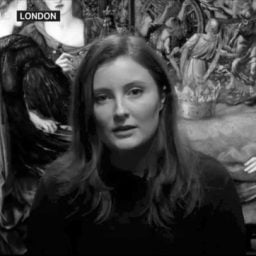On View
Is This Peak Cute? See Inside a London Show Exploring Our Cultural Obsession With the Adorable
The exhibit at London's Somerset House examines the rise of cuteness.
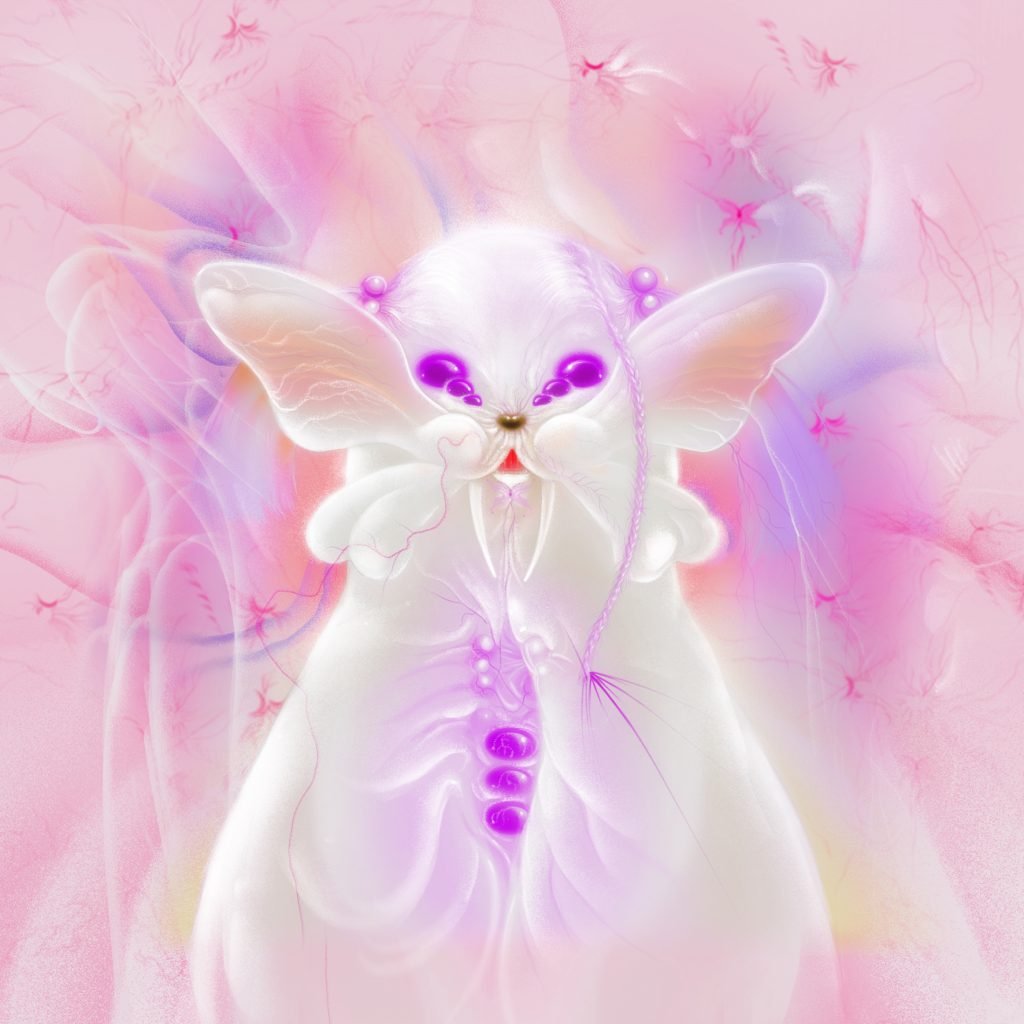
Cuteness is not a quality that often gets much air time in the rarified halls of an art museum. Its commercial appeal may have exploded in recent decades, flooding shop shelves and social media feeds with items or images deemed “cute,” but still it’s a descriptor that carries some hard to shake associations. As we continue to re-evaluate the art and entertainment that has been historically dismissed as superficial or unsophisticated, perhaps its time for us to reconsider “cute?”
“CUTE,” a new exhibition at London’s Somerset House places contemporary art by Wong Ping, Ram Han, and Juliana Huxtable side-by-side with widely-circulated pop cultural ephemera to tell the story of the rise of “cute,” delving into some of the reasons we find it strangely irresistible.
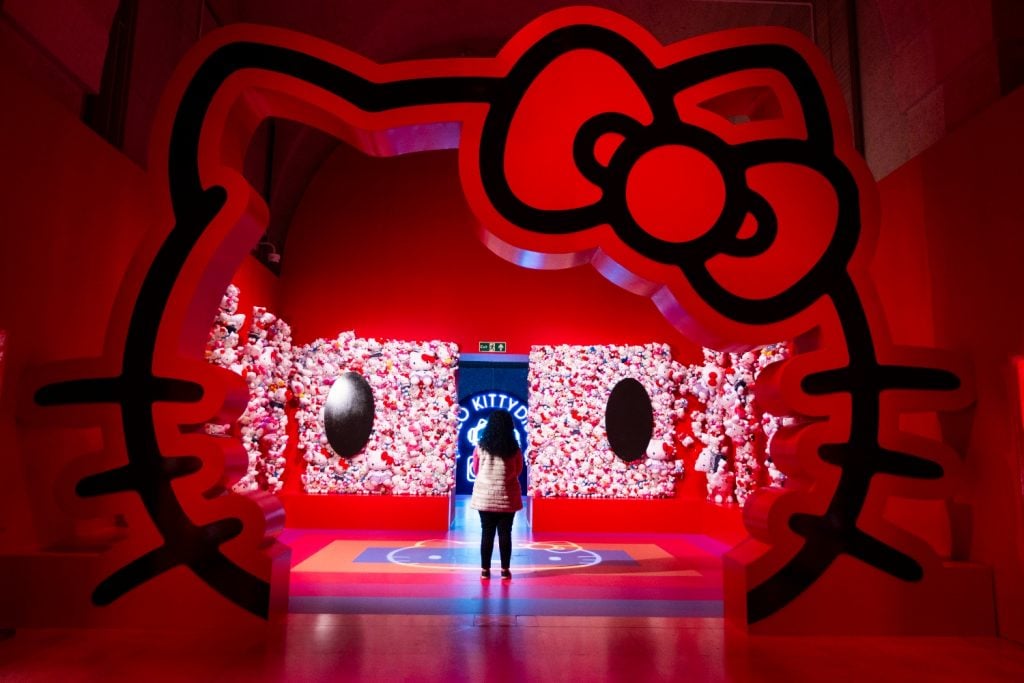
Hello Kitty installation in the “CUTE” exhibition at Somerset House in London. Photo: David Parry PA for Somerset House.
At times, the show has the air of a Comic Con, with some visitors enthusiastic enough to come dressed up in their own interpretation of “cute.” A section on the ground floor dedicated to the mammoth cultural impact of Hello Kitty, who is celebrating her 50th birthday this year, contains a Hello Kitty Disco where visitors can get down, and an Instagram-ready wall blooming with stuffed toys. Display cases filled with collectibles speak to the Hello Kittification of everyday items. Most will be familiar to anyone who has left the house in the past five decades, but there are also the less obvious—duct tape, flavored water, and Heinz pasta shapes.
“I already have pretty much half of these,” one woman wearing a Hello Kitty t-shirt gushed out loud when I visited. “I have the toaster, but not the TV.”
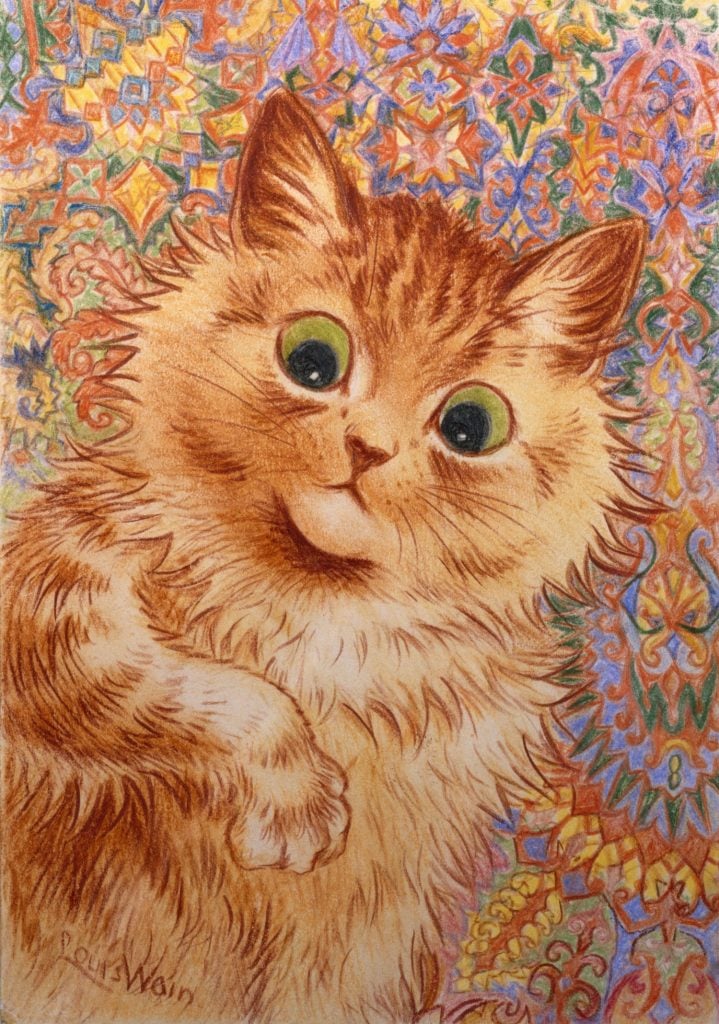
Louis Wain, Ginger Cat (1931). Photo courtesy of Bethlem Museum of the Mind.
Elsewhere we are reminded that, while it may seem like cuteness entered the cultural conversation around the same time that cat photos could be uploaded online, humans have long had a soft spot for bug-eyed, furry pets. A charming series of photographs by Harry Pointer, in which cats appear to have tea parties or ride tricycles, were a huge hit back in the 1880s. Edwardians of the early 1900s couldn’t get enough of the adorably mischievous cats imagined by illustrator Louis Wain.
In Japan, meanwhile, enthusiasm for “kawaii” was slowly building thanks to the work of artists like Yumeji Takehisa, Junichi Nakahara, and Katsuji Matsumoto. The style was adopted by many young people as a means to subvert traditional societal expectations. In the 1980s, this craze went global and the show demonstrates kawaii’s influence on Western pop culture most effectively through the medium of music videos ranging from Jun Togawa’s Suki Suki Daisuki (1985) to Björk’s Possibly Maybe (1995).
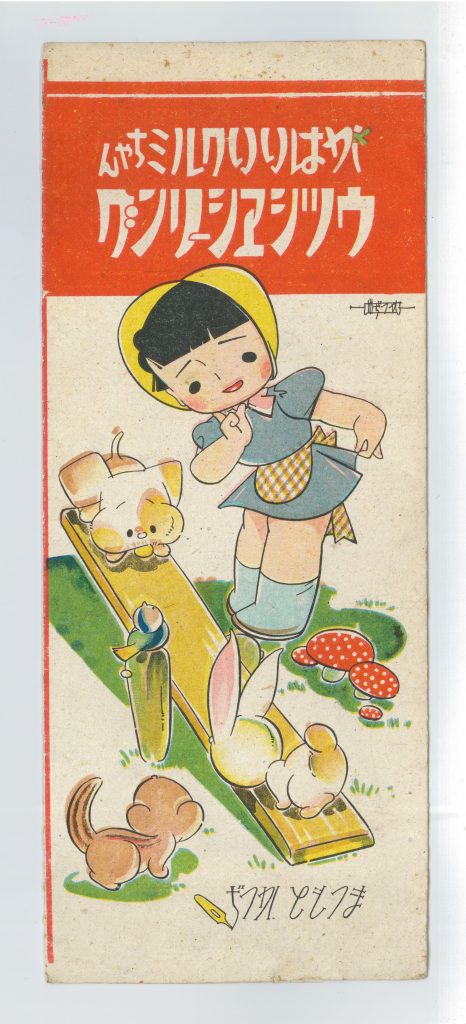
Katsudi Matsumoto, ‘Kawaii Kurumi-chan’ transfer stickers from 1943. Photo courtesy to Yayoi Museum.
Upstairs, we are exposed to “cute”‘s sharper edges. One display reminds the visitor that what seems “cute” might be a performance of vulnerability, but to what end? Figurines whose droopy eyes brim with tears are shown next to tour posters promoting the rapper Yung Lean’s Sad Boy music collective.
Elsewhere, cuteness is shown to be a convenient facade beneath which darker realities may lurk. Archival objects include cheerfully anthropomorphized oil droplets being used to advertise the oil and gas corporation Esso and happy emojis adorning a bag of pills. In American artist Mike Kelley’s Aah… Youth! (1990) photo series, a child’s cuddly toys look sorrowful and even vaguely sinister despite their permanently stitched-on smiles.
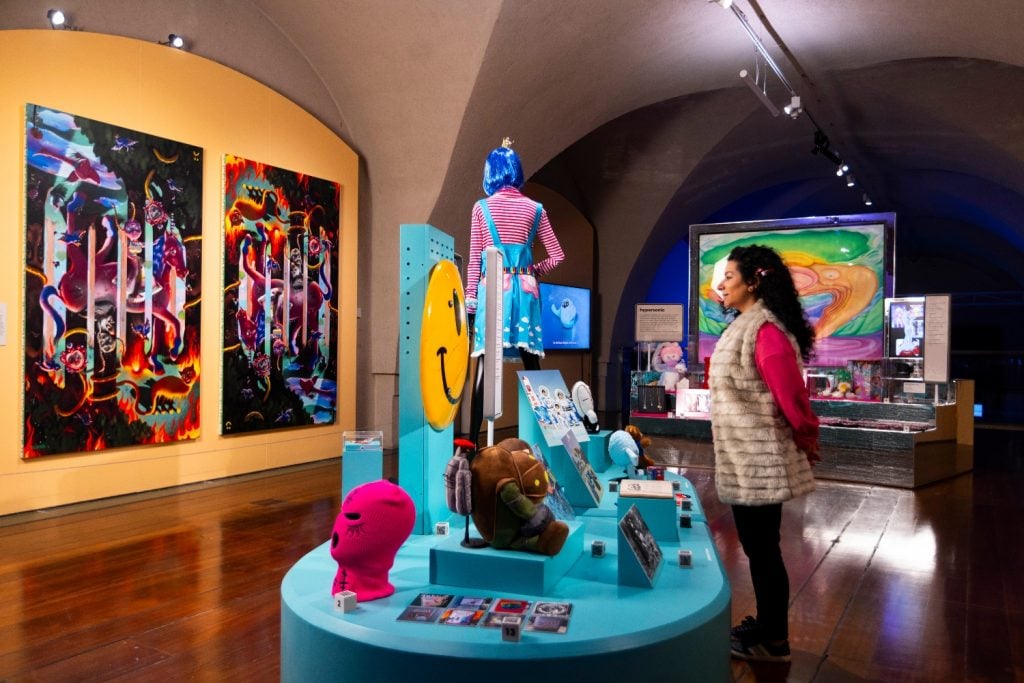
Sugar coated pill display in the “CUTE” exhibition with Rachel Maclean, <i>!step on no petS Step on no pets!</i> (2021) at Somerset House in London. Photo: David Parry PA for Somerset House.
Cuteness is an aesthetic that amplifies, and Somerset House’s galleries have been transformed into a fantasy world full of friendly creatures. Many of the cultural reference points were originally targeted towards children but, much like last summer’s Barbie movie, are now re-presented for the pleasure of adults. Sets of Sylvanian Families and Neopets may promise nostalgic comfort, but there is no real attempt to unpack why so many grown ups in 2024 feel tempted to self-infantalize. Will that be the secret to this show’s success?
“CUTE” is on at Somerset House in London through April 14, 2024.
More Trending Stories:
A Case for Enjoying ‘The Curse,’ Showtime’s Absurdist Take on Art and Media
Artist Ryan Trecartin Built His Career on the Internet. Now, He’s Decided It’s Pretty Boring
I Make Art With A.I. Here’s Why All Artists Need to Stop Worrying and Embrace the Technology
Sotheby’s Exec Paints an Ugly Picture of Yves Bouvier’s Deceptions in Ongoing Rybolovlev Trial
Loie Hollowell’s New Move From Abstraction to Realism Is Not a One-Way Journey

